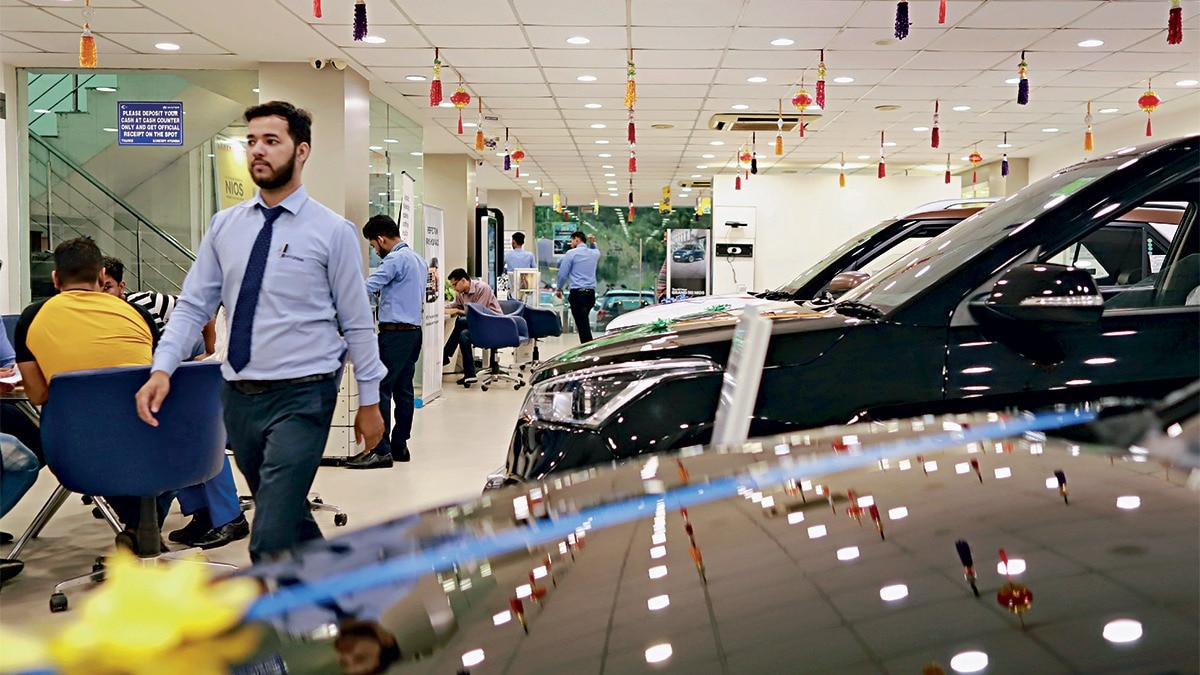
As you enter a Maruti Suzuki India Ltd (MSIL) dealership in West Delhi, you can’t help but notice pamphlets of the recently-launched Dream Series edition. The showroom also features special monsoon discounts of up to Rs 1 lakh on select models. A similar scenario is found at Tata Motors and Mahindra & Mahindra showrooms, where discounts of up to `1.4 lakh are offered on some models like Tata Safari, Tata Harrier, and XUV700 amid increasing competition. Meanwhile, Honda is offering discounts of up to Rs 96,000 on models such as Amaze, City, and Elevate. IPO-bound Hyundai Motor India is also offering discounts of up to Rs 2 lakh.
Auto discounts typically surface during the festival season, which usually kicks off in September. While advantageous for customers, this early occurrence points to increased inventory for dealers.
“The higher the inventory levels, the more the discount,” says Manish Raj Singhania, President, Federation of Automobile Dealers Association (FADA).
With increasing inventory levels, automakers are extending the discounts on a monthly basis. MSIL has extended its Special Edition Dream Series for Celerio, Alto K10, and Espresso to July. “We have witnessed a 17% increase in bookings after the launch of the Dream Series,” says Partho Banerjee, Senior Executive Officer, Marketing and Sales, MSIL.
Analysts believe now is the best time to buy a car as automakers are trying to liquidate their inventory.
On the other hand, the Society of Indian Automobile Manufacturers, expects original equipment manufacturers (OEMs) to take responsible decisions to reduce inventory.
“In India, sales are seasonal and typically peak towards the end of the year and again in March. There’s a significant uptick in sales during the festival season—from Dussehra to Diwali,” says Rajeev Singh, Partner and Consumer Industry Leader at consulting firm Deloitte Asia Pacific.
The industry witnesses a lean patch between April and September, followed by the 17-day period of Shradh, considered an inauspicious time by Hindus, according to Singh. “Discounts will continue for the next two months only,” says Singh.
HIGH INVENTORY
Auto dealers usually have a stock of up to 35 days. But FADA says the inventory level is currently at 62-67 days as OEMs have flooded the market with significant stock.
Singhania believes the inventory level is likely to be similar going forward.
Singh, on the contrary, expects inventory levels to normalise by the end of the year. “It (inventory levels) will get corrected. Dealers need to rotate money. So, they will not accept more stock from manufacturers,” says Singh.
A delay in the monsoon, an extreme heatwave, and the Lok Sabha elections are some reasons for sluggish demand. But, analysts are also citing a general slowdown in the auto industry. Deloitte’s Singh says the slowdown began in January.
The global slowdown in the industry began in FY23. Post-Covid, there was pent-up demand that led to a sudden uptick in sales. A change in consumer preference, from demand for goods to demand for services, is the reason behind the slowdown, notes Singh. The industry anticipates a contraction of 3-5% as well.
“Our demand for passenger vehicles will soften this year, because of pent-up demand [settling down]. It’s not going to be possible for us to remain at that same level always. Some corrections will happen this year. But the long-term view is still strong,” says Singh.
The industry contributes 7% to GDP and a slowdown will have ramifications. While the government expects the industry to contribute 10-12% to the GDP in the next 10 years, it is unlikely as the sector is growing at the same pace as the GDP, reasons Singh.
“The industry might continue to contribute to only about 7% or 8% of our GDP, at least in the next six to eight years. I don’t see this changing unless India decides to become a big exporter of cars, like China,” observes Singh.
@OrielAstha11